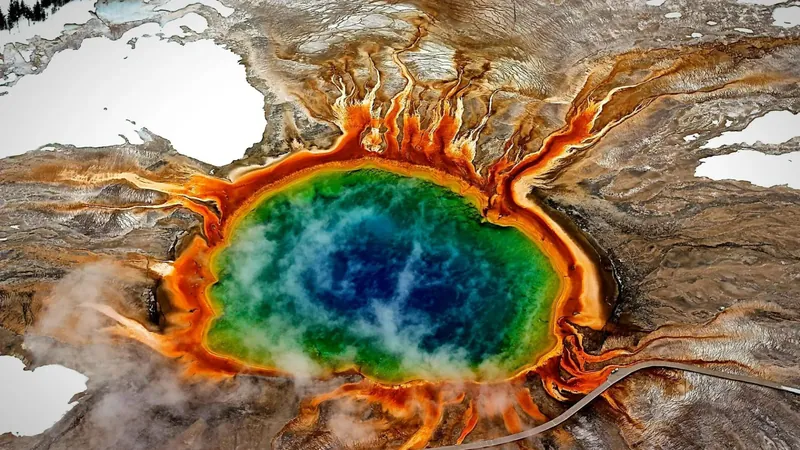
Is Yellowstone's Supervolcano Safe? Scientists Discover Its Protective Layer!
2025-05-01
Author: Wei
A Surprising Discovery Beneath Yellowstone
In a groundbreaking revelation, scientists have uncovered a hidden lid that secures the colossal magma reservoir under Yellowstone Supervolcano, effectively preventing a catastrophic eruption. For years, researchers speculated about a mysterious chamber beneath the northeastern region of the caldera, believed to contain molten rock, but details remained elusive.
Understanding Yellowstone's Volcanic History
Historically, Yellowstone erupts approximately every 600,000 years. However, it has been over 630,000 years since its last eruption, leading many to speculate about its imminent danger. New findings indicate that this extraordinary cap, located between 3.5 and 4 kilometers (2.2 to 2.5 miles) beneath the Earth's surface, is crucial for keeping the supervolcano in check.
The Role of the Cap in Eruption Prevention
This intriguing layer allows Yellowstone to 'breathe' by regularly releasing small amounts of gas, effectively stabilizing internal pressure and delaying an eruption. Researchers from the United States Geological Survey estimate the annual risk of a super-eruption at a mere 0.00014%.
Advanced Techniques Reveal New Insights
Earth scientist Brandon Schmandt of Rice University explained that while the presence of magma beneath Yellowstone has been known, the exact nature of the reservoir and its cap remained a mystery. Using innovative ground vibration methods developed by his co-led researcher Chenglong Duan, scientists were able to create unprecedented images of the magma reservoir's upper boundary.
The seismic waves generated during their research revealed a fascinating muddy mixture of supercritical fluid and magma lying at depths between 3 and 8 kilometers.
What Lies Beneath the Surface?
The discovery of a sharply defined cap—a 'self-sealed' lid with low porosity—means that Yellowstone can vent trace amounts of gas, preventing excessive pressure build-up. Underneath this cap, supercritical water exists, heated and pressured to an extent that blurs the line between liquid and gas. While this environment poses some eruption risk, the progressive cooling of the contents in the upper crust serves to maintain stability.
Good News for Yellowstone's Activity
The research suggests that despite the presence of a volatile-rich layer, the components necessary for an imminent eruption are lacking. Instead, the system appears to be effectively dissipating gas through cracks and channels in the mineral structure, coinciding with Yellowstone's abundant hydrothermal activity. Schmandt remarked, "This makes sense considering Yellowstone’s array of features venting magmatic gases."
In conclusion, while the Yellowstone Supervolcano's history and future can be concerning, recent discoveries indicate that the volcano remains stable, thanks to its unique magma cap.





 Brasil (PT)
Brasil (PT)
 Canada (EN)
Canada (EN)
 Chile (ES)
Chile (ES)
 Česko (CS)
Česko (CS)
 대한민국 (KO)
대한민국 (KO)
 España (ES)
España (ES)
 France (FR)
France (FR)
 Hong Kong (EN)
Hong Kong (EN)
 Italia (IT)
Italia (IT)
 日本 (JA)
日本 (JA)
 Magyarország (HU)
Magyarország (HU)
 Norge (NO)
Norge (NO)
 Polska (PL)
Polska (PL)
 Schweiz (DE)
Schweiz (DE)
 Singapore (EN)
Singapore (EN)
 Sverige (SV)
Sverige (SV)
 Suomi (FI)
Suomi (FI)
 Türkiye (TR)
Türkiye (TR)
 الإمارات العربية المتحدة (AR)
الإمارات العربية المتحدة (AR)